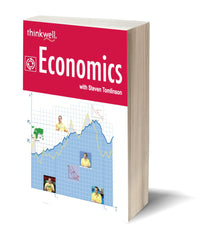4.1 The Basics of Production
4.1.1 Understanding Output, Inputs, and the Short Run
4.1.2 Explaining the Total Product Curve
4.1.3 Drawing Marginal Product Curves
4.1.4 Understanding Average Product
4.1.5 Relating Costs to Productivity
4.2 Variable Costs
4.2.1 Defining Variable Costs
4.2.2 Graphing Variable Costs
4.2.3 Graphing Variable Costs Using a Geometric Trick
4.3 Marginal Costs
4.3.1 Defining Marginal Costs
4.3.2 Deriving the Marginal Cost Curve
4.3.3 Understanding the Mathematical Relationship between Marginal Cost and Marginal Product
4.4 Average Costs
4.4.1 Defining Average Variable Costs
4.4.2 Understanding the Relationship between Average Variable Cost and Average Product of Labor
4.4.3 Understanding the Relationship between Marginal Cost and Average Variable Cost
4.5 Total Costs
4.5.1 Defining and Graphing Average Fixed Cost and Average Total Cost
4.5.2 Calculating Average Total Cost
4.5.3 Putting the Cost Curves Together
4.6 Long-Run Production and Costs
4.6.1 Defining the Long Run
4.6.2 Determining a Firm's Returns to Scale
4.6.3 Understanding Short-Run and Long-Run Average Cost Curves
4.6.4 Shifts in Cost Curves
4.7 Isocost/Isoquant Analysis
4.7.1 Constructing Isocost Lines
4.7.2 Understanding Isoquants
4.7.3 Finding the Cost-Minimizing Combination of Capital and Labor






